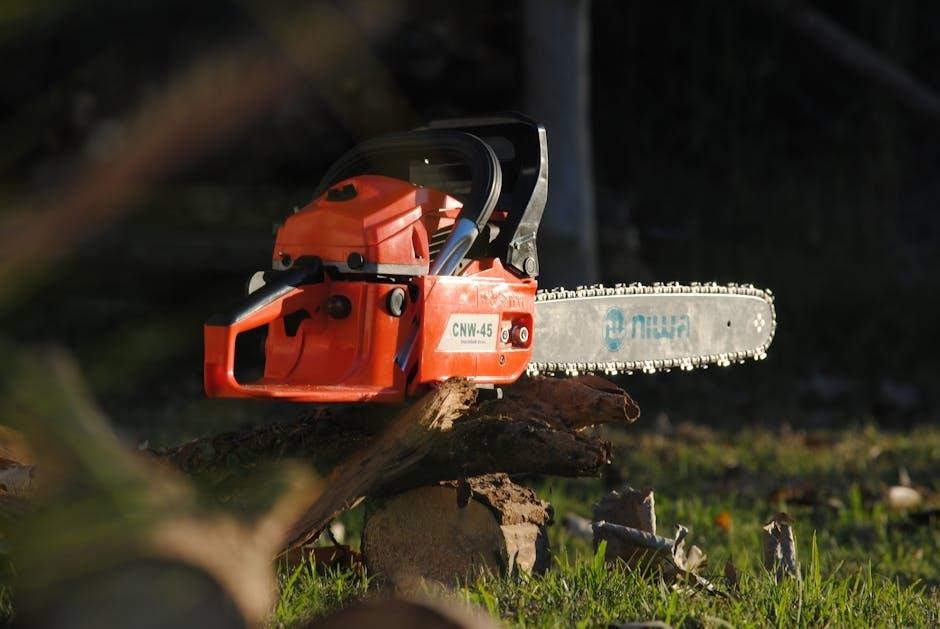Article Plan: General Chemistry Lab Manual
This manual provides a structured approach to general chemistry experiments‚ aligning with textbook topics. It emphasizes understanding why reactions happen‚ featuring pre-lab exercises and real-world scenarios.
Experiments cover density‚ melting/boiling points‚ chromatography‚ and stoichiometry‚ alongside hydrated salt formulas and conductivity. Digital access offers 36 optimized experiments.
Green chemistry principles are integrated‚ enhancing learning through practical application and modern techniques. The focus is on both procedure and conceptual understanding.
Welcome to the General Chemistry Lab! This laboratory course is an integral component of your overall chemistry education‚ designed to complement and reinforce the theoretical concepts presented in lecture. Unlike simply reading about chemical principles‚ the lab provides a hands-on environment where you can actively experience chemistry in action.
The primary goal of this lab is to develop your experimental skills – learning how to safely and accurately perform experiments‚ collect and record data‚ analyze results‚ and draw meaningful conclusions. You’ll become proficient in using common laboratory equipment and techniques‚ fostering critical thinking and problem-solving abilities.
This manual serves as your guide throughout the semester. Each experiment begins with an introduction outlining the underlying chemical principles and the experiment’s objectives. Detailed procedures are provided‚ alongside pre-lab exercises to ensure you’re prepared. Report forms are included to structure your data analysis and conclusions.
Furthermore‚ many experiments are contextualized with real-world scenarios‚ demonstrating the relevance of chemistry to everyday life and various scientific disciplines. We aim to not only teach what happens during chemical reactions‚ but also why they occur‚ fostering a deeper understanding of the subject matter. Remember to prioritize safety at all times – detailed safety procedures will be covered in the next section.
Successful completion of this lab requires active participation‚ careful observation‚ and a commitment to scientific rigor.
Safety Procedures in the Chemistry Lab
Your safety is paramount in the chemistry laboratory. Strict adherence to safety procedures is not optional; it’s a fundamental requirement for everyone in the lab. Before commencing any experiment‚ familiarize yourself with the location of safety equipment‚ including fire extinguishers‚ eyewash stations‚ and first aid kits.
Appropriate attire is crucial. This includes wearing approved safety goggles at all times to protect your eyes from chemical splashes or fumes. Closed-toe shoes are mandatory‚ and long hair must be tied back to prevent contact with chemicals or flames. Avoid wearing loose clothing that could pose a hazard.
Chemical handling requires caution. Never taste or smell chemicals directly. Use a wafting motion to cautiously detect odors. Always add acid to water‚ never water to acid‚ to avoid violent reactions. Dispose of chemical waste properly‚ following designated procedures and labeling guidelines.
Be aware of potential hazards associated with each experiment. Read the experiment thoroughly before starting‚ noting any specific warnings or precautions. Report any spills‚ accidents‚ or broken glassware to the instructor immediately. Never work alone in the lab.
Remember‚ a safe lab environment is a shared responsibility. By following these procedures‚ you contribute to the well-being of yourself and your classmates.
Basic Laboratory Equipment and Techniques

A well-equipped laboratory is essential for successful experimentation. Common glassware includes beakers‚ Erlenmeyer flasks‚ graduated cylinders‚ and test tubes – each designed for specific purposes like mixing‚ heating‚ or measuring volumes. Understanding their proper use is fundamental.
Accurate measurements are critical. Utilize balances for determining mass‚ ensuring they are properly calibrated. Employ volumetric pipettes and burettes for precise liquid transfer‚ understanding meniscus reading techniques. Graduated cylinders offer less precision but are suitable for approximate volumes.
Heating techniques require care. Bunsen burners and hot plates are common heat sources. Always use appropriate glassware and handle hot objects with tongs or heat-resistant gloves. Never leave a heated apparatus unattended.
Filtration and separation are vital skills. Learn to use filter paper and funnels for separating solids from liquids. Techniques like decanting and centrifugation are also valuable for isolating components.
Mastering these basic techniques – alongside proper equipment handling – forms the foundation for more complex experiments. Careful observation and meticulous technique are key to obtaining reliable results.
Physical Properties of Matter: Density
Density‚ a fundamental physical property‚ describes mass per unit volume. This experiment explores determining density using both liquids and solids‚ applying the formula: Density = Mass/Volume. Accurate measurements of both mass and volume are crucial for reliable results.

Mass is determined using an analytical balance‚ ensuring proper calibration and tare settings. Volume measurement depends on the substance’s state. For liquids‚ graduated cylinders or pipettes are used‚ carefully reading the meniscus. For irregularly shaped solids‚ the water displacement method is employed.
The water displacement method involves recording the initial water volume‚ submerging the solid‚ and noting the new volume. The difference represents the solid’s volume. This technique relies on the principle that the solid’s volume equals the volume of water it displaces.
Understanding density allows for substance identification and prediction of behavior. Comparing experimental densities to known values validates the results. Sources of error‚ such as measurement inaccuracies and temperature variations‚ should be considered;
This lab reinforces precision in measurement and the application of a fundamental scientific principle.
Physical Properties of Matter: Melting and Boiling Points
Melting and boiling points are intrinsic physical properties used to characterize substances and assess their purity. This experiment focuses on determining these temperatures for various compounds‚ observing the phase transitions between solid‚ liquid‚ and gaseous states.

Melting point determination involves carefully heating a substance and recording the temperature at which it transitions from solid to liquid. A pure crystalline solid exhibits a sharp melting point‚ while impurities broaden the range.
Boiling point determination similarly involves heating a liquid and observing the temperature at which it transitions to a gas. Atmospheric pressure influences boiling points; lower pressure results in lower boiling points.
Accurate temperature measurement is vital‚ utilizing calibrated thermometers or temperature probes. Careful observation of the phase change is crucial‚ noting the initial and final temperatures.
Comparing experimental values to literature values confirms substance identity and assesses purity. Understanding these properties aids in substance identification and separation techniques.
This lab emphasizes careful observation and the relationship between temperature and phase transitions.
Chromatography Techniques
Chromatography is a powerful separation technique based on the differential distribution of substances between a stationary and a mobile phase; This experiment introduces students to fundamental chromatographic principles and applications.
Paper chromatography‚ a simple technique‚ separates components based on their polarity and interaction with the paper (stationary phase) and a solvent (mobile phase). Different compounds travel at varying rates‚ resulting in separation.
Thin-layer chromatography (TLC) utilizes a thin layer of adsorbent material on a plate. It offers faster separation and better resolution than paper chromatography‚ allowing for quick analysis of mixtures.
Students will learn to prepare samples‚ select appropriate solvents‚ and visualize separated components using techniques like UV light or staining. Retention factor (Rf) calculations quantify the migration of each component.

Understanding these techniques is crucial for identifying unknown substances‚ analyzing reaction mixtures‚ and purifying compounds. Chromatography is widely used in various scientific fields.
This lab provides hands-on experience with separation science and analytical techniques.
Determining the Formula of a Hydrated Salt
Hydrated salts contain water molecules within their crystal structure‚ represented by a formula like CuSO4·xH2O‚ where ‘x’ is the number of water molecules per formula unit. This experiment aims to determine the value of ‘x’ for an unknown hydrated salt.
The procedure involves accurately measuring the mass of a hydrated salt‚ heating it to drive off the water‚ and then measuring the mass of the anhydrous salt remaining. The difference in mass represents the mass of water lost.
Students will calculate the moles of water lost and the moles of anhydrous salt remaining. The ratio of moles of water to moles of anhydrous salt will yield the value of ‘x’ in the hydrated salt formula.
Precise measurements are crucial for accurate results. Careful heating is necessary to ensure complete water removal without decomposing the anhydrous salt.
This experiment reinforces stoichiometry‚ mole concepts‚ and experimental techniques. Understanding hydration is important in various chemical applications‚ including pharmaceutical and industrial processes.
The lab emphasizes the importance of experimental design and data analysis.
Formula Mass of a Compound
Determining the formula mass (also known as molecular weight) of a compound is a fundamental skill in chemistry. This experiment guides students through the process of calculating formula mass using the periodic table and chemical formulas.
The procedure typically involves using a known quantity of a volatile liquid and applying the ideal gas law (PV=nRT) to determine its molar mass. Alternatively‚ students may calculate the formula mass directly from the chemical formula by summing the atomic masses of all atoms in the formula unit.
Students will practice using atomic masses from the periodic table and applying stoichiometric principles. They will learn to convert between mass‚ moles‚ and formula mass.
Accuracy in using atomic masses and performing calculations is essential. Understanding the concept of the mole and its relationship to formula mass is crucial.
This experiment reinforces fundamental concepts in stoichiometry and provides a foundation for more advanced calculations in chemistry. It connects theoretical knowledge to practical application.
The lab emphasizes precision and attention to detail.
Electrical Conductivity of Aqueous Solutions
This experiment investigates the ability of different aqueous solutions to conduct electricity. It explores the relationship between the concentration of ions in solution and its conductivity‚ linking directly to the concepts of electrolytes‚ strong acids/bases‚ and weak acids/bases.
The procedure involves using a conductivity meter to measure the electrical conductance of various solutions‚ including ionic compounds‚ covalent compounds‚ and acids/bases of differing strengths. Students will systematically test solutions and record their conductivity values;
Students will learn to differentiate between strong electrolytes (which conduct electricity well) and weak electrolytes (which conduct poorly). They will also observe how the concentration of ions affects conductivity.
Careful handling of the conductivity meter and proper cleaning of the electrode are essential for accurate measurements. Understanding the dissociation of ionic compounds and the ionization of acids/bases is crucial.
This lab reinforces the connection between molecular structure‚ solution chemistry‚ and macroscopic properties. It provides a practical demonstration of ionic behavior in solution.
The experiment highlights the importance of experimental technique and data analysis.

Stoichiometry and Chemical Reactions
This experiment focuses on applying stoichiometric principles to real-world chemical reactions. Students will perform a reaction‚ carefully measure reactant masses‚ and determine the amount of product formed‚ validating the law of conservation of mass.

The procedure typically involves a precipitation reaction‚ a gas-evolving reaction‚ or a simple acid-base neutralization. Students will calculate theoretical yields based on the balanced chemical equation and compare them to actual yields obtained experimentally.

Key concepts reinforced include limiting reactants‚ excess reactants‚ percent yield‚ and the importance of balanced chemical equations. Students will practice converting between grams‚ moles‚ and chemical formulas.
Accurate measurements of mass are critical for obtaining reliable results. Proper technique in filtering‚ drying‚ and weighing precipitates is essential. Understanding potential sources of error is also important.
This lab bridges the gap between theoretical calculations and practical experimentation. It emphasizes the quantitative nature of chemistry and the importance of precise measurements.
The experiment develops analytical skills and reinforces problem-solving abilities.
Gas Laws and Molar Mass Determination
This laboratory exercise explores the relationships between pressure‚ volume‚ temperature‚ and the number of moles of a gas‚ as described by the Ideal Gas Law (PV=nRT). Students will experimentally determine the molar mass of an unknown volatile liquid.

The procedure typically involves vaporizing a small amount of the unknown liquid in a flask and measuring the mass of the vaporized sample. Measurements of the flask’s volume‚ the temperature of the vapor‚ and the atmospheric pressure are also recorded.
Using the Ideal Gas Law‚ students calculate the number of moles of the vaporized liquid and then determine its molar mass. This method provides a practical application of gas law principles.
Careful attention must be paid to ensuring the flask is completely filled with vapor and that the temperature is accurately measured. Understanding the assumptions of the Ideal Gas Law is also crucial.
This lab reinforces the connection between macroscopic properties (pressure‚ volume‚ temperature) and microscopic properties (number of moles‚ molar mass). It develops skills in data analysis and error assessment.
The experiment demonstrates a classic method for determining molar mass.

Acid-Base Titrations
This experiment introduces students to the fundamental technique of acid-base titrations‚ a quantitative analytical method used to determine the concentration of an unknown acid or base. Students will learn to standardize a base solution (typically NaOH) using a primary standard‚ such as potassium hydrogen phthalate (KHP).
The procedure involves carefully adding the standardized base to a known volume of the unknown acid solution until the equivalence point is reached. The equivalence point is determined using an indicator that changes color or by monitoring the pH with a pH meter.
Calculations are then performed to determine the concentration of the unknown acid. Students will practice stoichiometric calculations and understand the concept of neutralization reactions.
Accuracy in titration requires precise measurement of volumes and careful observation of the endpoint; Understanding the principles of strong and weak acid/base behavior is essential.
This lab develops skills in volumetric analysis‚ data interpretation‚ and error analysis. It reinforces the concepts of molarity‚ stoichiometry‚ and acid-base chemistry.
Titrations are widely used in various fields‚ including environmental monitoring and quality control.
Spectrophotometry and Beer-Lambert Law
This experiment explores the relationship between absorbance and concentration of a colored solution‚ governed by the Beer-Lambert Law. Students will utilize a spectrophotometer‚ an instrument that measures the amount of light that passes through a solution.
The procedure involves preparing a series of solutions with known concentrations of a colored compound. These solutions are then analyzed using the spectrophotometer at a specific wavelength‚ typically the wavelength of maximum absorbance (λmax).
Data collected will be used to create a calibration curve‚ plotting absorbance versus concentration. The Beer-Lambert Law (A = εbc) will be applied‚ where A is absorbance‚ ε is molar absorptivity‚ b is path length‚ and c is concentration.
Students will then determine the concentration of an unknown solution by comparing its absorbance to the calibration curve. Understanding the factors affecting absorbance‚ such as solvent and temperature‚ is crucial.
This lab develops skills in instrument operation‚ data analysis‚ and applying the Beer-Lambert Law. It reinforces concepts of light absorption‚ concentration‚ and analytical chemistry.
Spectrophotometry is widely used in various fields‚ including biochemistry and environmental science.
Qualitative Analysis of Ions
This experiment focuses on identifying unknown ions present in a solution using a series of precipitation and complexation reactions. Students will learn systematic analytical techniques to determine the presence of specific cations and anions.
The procedure involves adding various reagents to the unknown solution‚ observing the formation of precipitates or color changes. These observations are then used to deduce which ions are present based on solubility rules and known reaction characteristics.
Common ions tested include silver (Ag+)‚ lead (Pb2+)‚ copper (Cu2+)‚ iron (Fe3+)‚ and chloride (Cl-)‚ sulfate (SO42-)‚ and carbonate (CO32-). Students will utilize flowcharts to guide their analysis‚ ensuring a logical and organized approach.
Careful observation and accurate recording of results are essential for successful identification. Confirmation tests may be employed to verify the presence of specific ions‚ minimizing false positives.
This lab develops critical thinking‚ observational skills‚ and an understanding of chemical reactivity. It reinforces concepts of solubility‚ precipitation‚ and ion identification.
Qualitative analysis is a fundamental skill in analytical chemistry and environmental monitoring.
Green Chemistry Principles in the Lab
This section introduces the core principles of green chemistry and their practical application within the general chemistry laboratory setting. The goal is to minimize environmental impact and promote sustainable practices.
Experiments are modified to reduce waste generation‚ utilizing smaller reaction scales and alternative‚ less hazardous reagents. Emphasis is placed on atom economy‚ maximizing the incorporation of starting materials into the desired product.
Safer solvents are prioritized‚ replacing traditional volatile organic compounds with more benign alternatives like water or ethanol. Waste disposal procedures are optimized to minimize pollution and promote recycling.
Students are encouraged to consider the entire lifecycle of chemicals used in the lab‚ from production to disposal. Energy efficiency is promoted through techniques like using efficient heating methods and minimizing reaction times.
This approach aligns with the Green Chemistry Teaching and Learning Community (GCTLC) initiatives‚ fostering a responsible and environmentally conscious laboratory experience. It prepares students for future careers in sustainable chemistry.
Implementing these principles reduces risk and promotes a safer‚ more sustainable learning environment.
Real-World Applications of General Chemistry Experiments
This section bridges the gap between theoretical concepts learned in the general chemistry lab and their practical relevance in diverse fields. Experiments are presented within the context of real-world scenarios‚ enhancing student engagement and understanding.
For example‚ density measurements are linked to applications in materials science and quality control. Titration exercises are connected to environmental monitoring and pharmaceutical analysis. Stoichiometry is demonstrated through its role in industrial chemical production.
The manual incorporates scenarios that place experiments in a relatable context‚ such as analyzing water quality‚ determining the composition of alloys‚ or optimizing chemical processes. Students explore how chemical principles underpin everyday technologies.
Understanding the formula of a hydrated salt connects to pharmaceutical formulation and material stability. Gas law experiments relate to atmospheric science and industrial gas handling. Spectrophotometry finds application in clinical diagnostics and environmental testing.
By highlighting these connections‚ the lab manual fosters a deeper appreciation for the power and versatility of general chemistry in solving real-world problems.


























































































